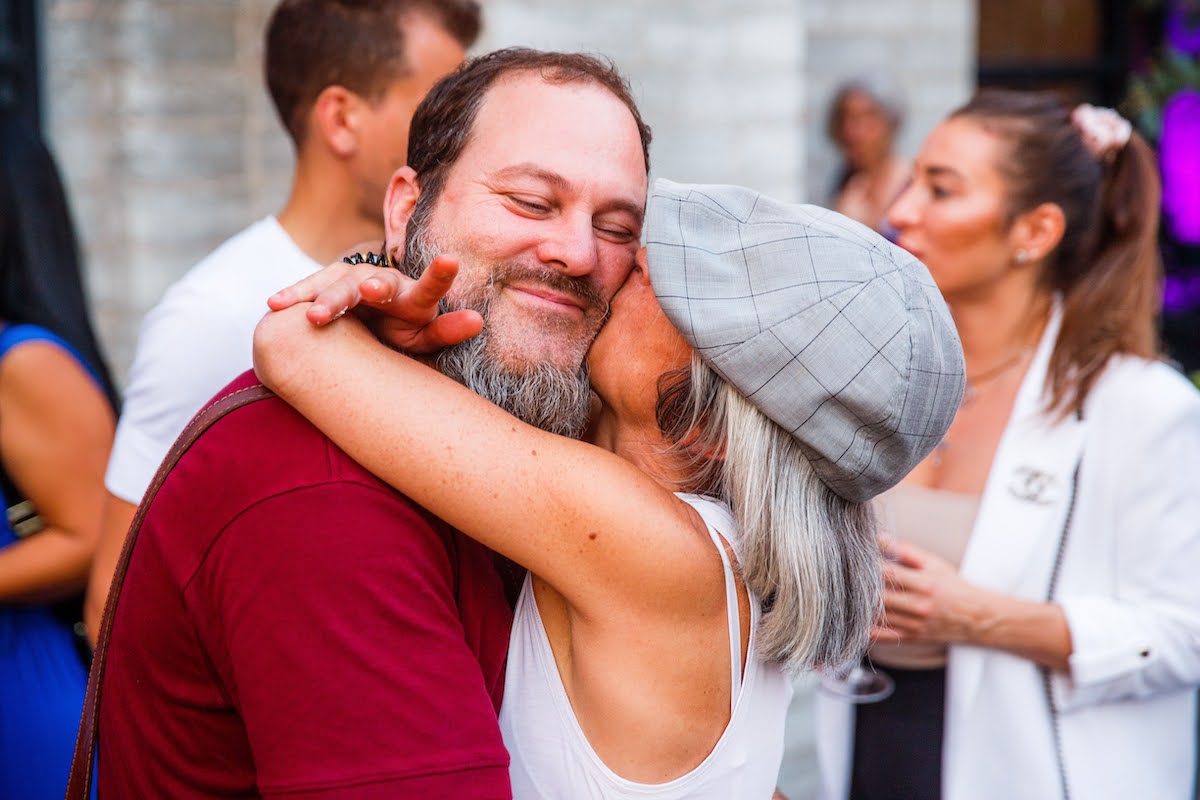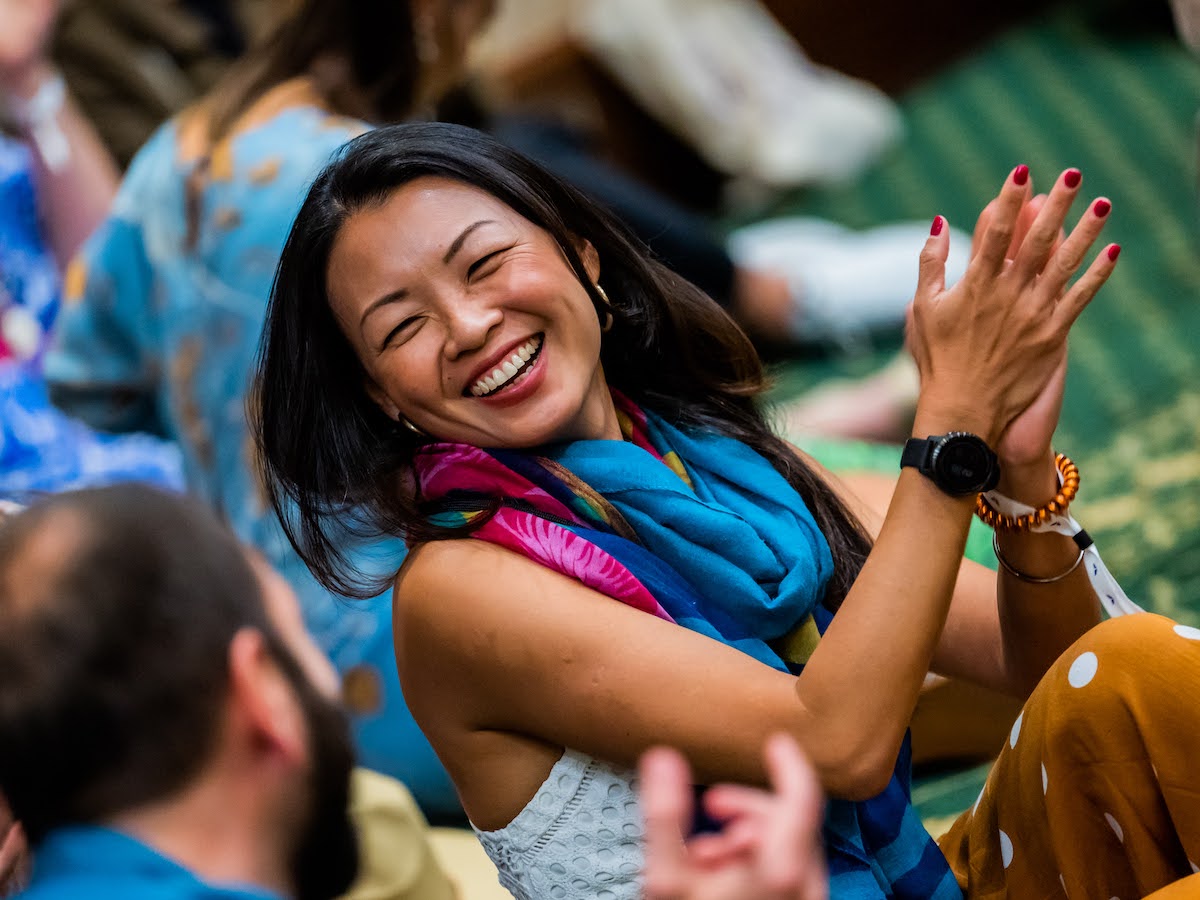There’s a feeling of warmth throughout your body as you embrace the sense of groundedness. Your breathing slows down and there’s spaciousness in your heart. The corners of your mouth turn into a smile, giving off the vibes of love from your overflow.
That is what gratitude is made out of. And we’ll take that attitude any day.
As Roman philosopher Lucius Annaeus Seneca says, “Nothing is more honorable than a grateful heart.”
How to practice gratitude: 6 expert-backed techniques
Gratitude is a thriving market on its own. There are journals, apps, talks, workshops, websites filled with quotes, and many more that promise to help you transform your life. But it all starts by developing this amazing habit.
The trouble with happiness is that people don’t practice it.
— Paul McKenna, trainer of Mindvalley’s Everyday Bliss Quest
Now, if you looking for ways to cultivate this attitude of appreciation, here are three suggestions on how to start a gratitude practice from Paul McKenna in his Everyday Bliss Quest at Mindvalley:
1. Retrain your brain
When stressed, many of us focus on what’s wrong or what could go wrong in our lives. It’s not our fault, really. It’s just that our brains are programmed for survival — it’s called ‘fight or flight.’
According to Paul, who’s also an internationally-recognized hypnotherapist, “what we practice, we get good at.” So people who are thinking about what could go wrong all the time are training themselves to constantly be in a state of high alert.
The way you feel from moment to moment is a direct result of the way you are using your body and the pictures and sounds you are making in your mind.
— Paul McKenna, trainer of Mindvalley’s Everyday Bliss Quest
Here’s where mindfulness can help.
Experiencing the moment as it is enables you to get out of your head. Alone, it can help you clean up your ‘mental mess,’ which is especially beneficial for those looking at how to practice gratitude when depressed. Added to a gratitude practice, the results are astounding.
What Paul suggests: Remember, you get good at what you practice, so make it a habit to focus on what’s right instead of what’s wrong.
Whenever you notice yourself feeling positive emotions, take a moment to express your gratitude and acknowledge how good it feels. Make an intention to seek out more of these good feelings.
2. Meditate
“A lot of people don’t realize how much stress affects their lives,” Paul explains. He adds that stress impacts “not just their psychological well-being, but their physical well-being and health as well.”
In fact, the 2021 Stress in America survey by the American Psychological Association found one in three Americans is so stressed that they sometimes struggle to make basic decisions, like what to wear or eat.
The reality is every one of us experiences stress. It’s just part of who we are. So if you’re looking for something to help bring down the stress and crank up the gratitude, then meditation is a great practice to turn to.
What Paul suggests: It just so happens Paul has one of the best guided meditations out there — The Big Mind. It’s inspired by Zen Master Genpo Roshi and helps direct you towards inner peace in minutes, whether you’re a seasoned or novice meditator.
3. Write it down
There’s an old adage that goes like this: “If you want to remember something, write it down.” And people who know how to practice gratitude daily understand that writing it down is incredibly powerful.
As a matter of fact, research suggests that writing activates more regions of the brain than typing does. So by opting for handwriting instead of your device, you’ll remember the contents better.
This goes to being grateful as well. When you make it a daily habit to put down the things to be grateful for, no matter how big or small, you train your brain to find the best in all possible situations.
What Paul suggests: “Make a joy list,” he says. You can start a gratitude journal — a very popular method, we might add. Or, if you’re a visual person, a gratitude jar is always a great option.
There’s no right or wrong way to do it, just as long as you keep track of the joy and gratitude you experience throughout the day.
4. Do something kind for others
The wonderful thing is that when you cultivate gratitude, you’re more likely to be kind to others. And when you are kind to others, you feel more gratitude.
The cycle just keeps empowering itself over and over again. It’s never-ending.
So when you struggle to find something to be grateful for, consider doing something kind for another person. Whether it’s simple like opening the door for someone or popping a quarter into an expired parking meter, little acts of kindness go a long way.
5. Surround yourself with love
Your environment plays a huge role in your thoughts and moods.
It takes a lot of energy and effort to remain positive when surrounded by negativity. It’s not always easy to change things like where you live or your job, but it is easier than you think to surround yourself with love.
Make it a goal to find a positive community of people you can befriend. It can be an organized club or hanging out with friends at a coffee shop with good vibes and conversations.
6. Be realistic
Life has its good and bad. Although their radar hones in on positive thoughts, grateful people still feel negative emotions such as sadness, fear, and anger. They acknowledge that life brings with it adversities, but they also understand that authentic gratitude is a way of life.
What is gratitude?
Stemming from the Latin word gratus, meaning ‘pleasing’ or ‘thankful,’ gratitude is more than simply saying ‘thank you.’ It’s the all-encompassing feeling of appreciation that amplifies the positivity in your life and raises your vibration.
The great thing about this emotion is that it’s a catalyst for happiness. It’s a concept simple enough to grasp, it takes little effort to do, and there are plenty of scientific studies proving its effectiveness.
Take this 2022 study by the University of California San Diego’s Rady School of Management, for instance. It looked into the physiological and biological benefits of co-workers being appreciative of one another.
The researchers found that those who expressed appreciation before a high-stress task had a better cardiovascular response than those who didn’t. Simply put, being grateful helps reduce stress.
That’s something that all of us could benefit from.

The benefits of gratitude
Like the sun is to your body, gratitude is to your mind. When you practice it daily, there are a number of benefits to your well-being:
- Emotional benefits. It positively impacts your self-esteem, enhances positive emotions, and leaves you much happier.
- Social benefits. You attract positive people into your life, improve your romantic relationships, and strengthen your family bond, especially in times of stress.
- Personality benefits. You’re more optimistic, encouraging you to be more giving and less likely to be materialistic.
- Career benefits. You’re more patient and better at decision-making; it helps you find meaning in your work and improves work-related stress and mental health.
- Physical benefits. It reduces depressive symptoms, helps you sleep better, and motivates you to make healthier choices.
The practice of thankfulness encourages you to count your blessings — listing them in the recommended statement form of “I am grateful for…” For example: “I am grateful for the sunshine,” “I am grateful for being alive,” or even “I am grateful for coming across this article” (well, you are reading this for a reason… *cough* Law of Attraction *cough*).
And while cultivating gratitude on the regular is like soaking up some good ol’ Vitamin D under the mid-morning sun, there is a huge difference between being grateful and feeling grateful.
Being vs. feeling
We’re not trying to be petty about grammar. (Okay, maybe just a little bit.) But being and feeling are two different things.
- I am grateful. This sentence describes a state of being and has to do with the mind.
It tells you what blessings a person has chosen to focus on with the intentional effort of building a healthier self-concept. An example is: “I am grateful for my family.”
- I feel grateful. This sentence describes a state of feeling and has to do with emotions.
It tells you what sensations a person is experiencing in the moment. Keep in mind that feelings pass. For example, “I feel grateful for my husband cooking dinner tonight.”
The difference may seem as subtle as mid-morning sun and afternoon sun, but the outcomes of each are vastly different.
Feeling grateful shows appreciation and giving thanks, but it doesn’t always lead to major action in your life. Being grateful, on the other hand, does.
It demands presence and mindfulness. And that presence is healing energy bound to bring you to another level of consciousness and guide you toward your more authentic self.
Being or feeling — there’s nothing wrong with either one. Remember that one defines who you are while the other is what you feel momentarily.
But the trouble starts when you start mushing them together or overusing them — much like sitting out in the sun too long, there’s a chance it can negatively affect your health.

The downside of gratitude
Gratitude is highly regarded when it comes to mental health, so it’s difficult to see that there’s a downside to it. After all, we were taught to count our blessings so that we attract more of them. (And how true is that in this time in history where unrest and a pandemic are happening.)
The reality is we all have sh*t moments sometimes.
Like, let’s say you just got dumped. You’re drowning yourself in tears of heartbreak and numbness. You can barely get out of bed. You may or may not have showered (no judgment here).
So, when someone says: “be grateful you dodged that bullet,” “there are other fish in the sea,” or even “things could be much worse”… to that, we think the appropriate response should be: “ummm, thanks?”
Well-intended advice is always welcome; as we mentioned before, practicing gratitude definitely has its benefits. But in sh*tty moments like a breakup, you can be grateful without feeling grateful.
When you fixate too much on the ‘bright side,’ you tend to forget to acknowledge some very valid emotions. After all, life is not a scene from Monty Python’s Life of Brian — none of us are unfortunates tied to crucifixes and cheerfully singing “Always Look on the Bright Side of Life.”
Forcing gratitude
Forcing yourself to express gratitude is just as bad as forced apologies, like when you were younger and your parents forced you to say “sorry” to your sibling. You may not have felt sorry and it could’ve also been that you weren’t even in the wrong. By forcing an apology, it breezes past the feelings and doesn’t get to the heart of the problem.
Similarly, when gratitude is forced, you dash past your emotions without even a quick “hello” in hopes of getting to your silver lining. It may work for a while — the ‘fake it ‘til you make it’ mindset — but, as research shows, suppressing your feelings can increase your stress levels and other mental health issues.
Buddhist monk Gelong Thubten said it perfectly: “Gratitude isn’t just about gratitude for the good things… Gratitude can be for everything. The difficult things are what challenge us to grow.”
Having sh*tty moments doesn’t mean you’re ungrateful, but it does give you a great opportunity to sit with your feelings and acknowledge the suck. It’ll allow you to keep your attitude toward gratitude in check.
Interrupt your life with gratitude
Gratitude allows us to feel the effects of kindness and embody it as part of our purpose in life. When we experience it, we want to share it with others. When we are grateful, we raise our vibrations to be more receptive to the good things in our lives.
If you do nothing else but live these values every single day, you cannot imagine how fulfilling your life will become!
— Paul McKenna, trainer of Mindvalley’s Everyday Bliss Quest
Developing a life-long attitude of gratitude takes practice. You can find guidance on how to do so over at Mindvalley, where personal growth programs are constantly — excuse the pun — growing.
Take in the Everyday Bliss free masterclass and let Paul McKenna guide you to evolve into a calmer, more resilient self. You’ll discover how you can better manage your stress and make an ‘attitude of gratitude’ your new normal.
After all, if your gratitude attitude leads to rays of happiness, you deserve to shine bright like the sun.








